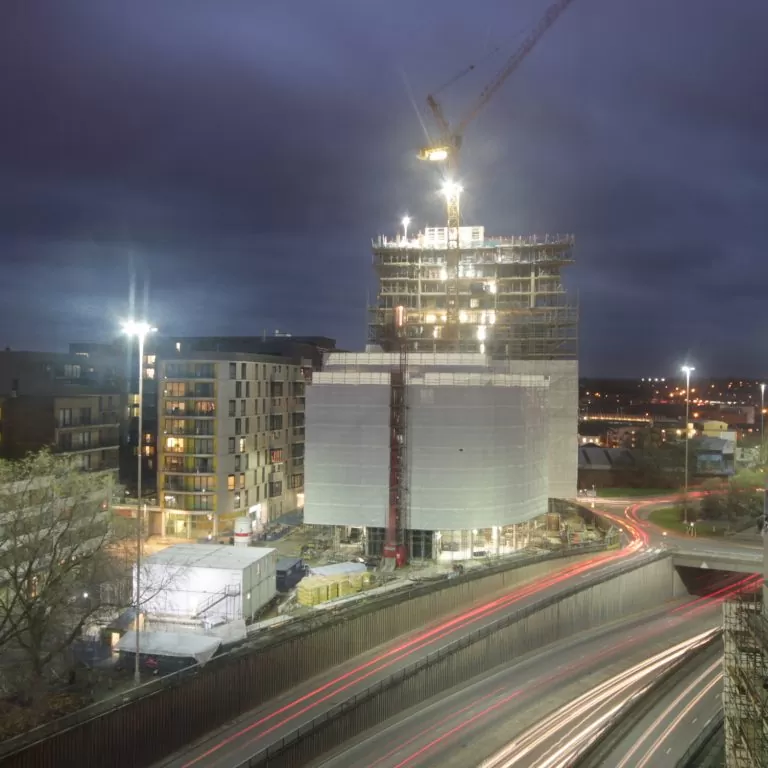
News Night Sky Time-Lapse Photography
One of the most popular genres of time-lapse photography is the night sky due to its magical, mysterious appeal. Spectacular time-lapse videos show the wonders of the night sky, capturing details unseen to the human eye. This natural phenomenon is so special and awe inspiring that it has its own genre, night sky time-lapse photography, also known as astrophotography.
How do you capture night sky photos?
To capture stunning night sky photos for time-lapse the right location, time-lapse camera equipment including a DLSR camera, moonless clear skies and plenty of patience are all needed. Using a series of these still images in rapid sequence means that within a few minutes, night sky time-lapse can show stars and auroras as they seem to move through the dark skies.
What is the best location to shoot a night-sky time-lapse?
The best location to capture the night sky is somewhere with little light pollution – away from the ambient light or skyglow given off by built up urban areas and cities. Night sky time-lapse footage is best captured in a rural area with an incredibly dark setting to show off the starry night.
To achieve the best night sky time-lapse capture, it is also worth including a noteworthy foreground location. Framing the night sky with an interesting foreground element, such as a lake, tree, or rock formation, gives the most interesting capture of the night sky. The ocean in the foreground to this Australian night sky time-lapse video by Alex Cherney demonstrates the added beauty and benefit of another natural element within the photographs. As with all night sky time-lapse, the capture for Alex Cherney’s video was a slow process, involving 31 hours of long exposure photographs taken across six moonless nights looking out at Australia’s Southern Ocean.
Another striking night sky time-lapse video was taken by Michael Shainblum. His ‘Drifting through the Night’ time-lapse uses a variety of beautiful landscapes and foregrounds including mountains, trees and oceans to frame the night sky. Thousands of long-exposure photographs were taken in numerous locations and countries from California to Hawaii and Italy over several years. He has ‘time blended’ all the captures and used a combination of star trail shots with normal time-lapse. “The intro sequences are a blend of star trail timelapses mixed with regular night sky timelapses to create a singular shooting star effect,” describes Shainblum.
Night sky time-lapse in cities
Night sky photography can be taken in urban areas, but photographers must tackle artificial light too. Professional time-lapse providers, such as Time-Lapse Systems are experienced in managing the numerous light sources and levels to always get the ultimate capture. Several photographers also use night time-lapse in urban areas to juxtapose city lights with the glory of the night sky. One project set up to promote dark skies Skyglow uses such a mix of footage effectively.
How to capture the Milky Way with night-sky time-lapse
The Milky Way galaxy is a fascinating night sky subject. Time-lapse footage of the night sky allows the cosmic body to be captured as it seems to move through the dark sky.
A lot of time and patience is required to capture the Milky Way. This is demonstrated by the Goldpaint Photography project “Illusion of Lights: A Journey into the Unseen,” which took over three years to create. Just one 5 second clip of the Milky Way is in fact the combination of 150 images taken throughout a night. The footage of the Milky Way, auroras, and star-filled skies, was taken in remote regions with little light pollution. Goldpaint’s beautiful locations span western USA, from the Sierra Nevada mountains to the deserts of the southwest. Interestingly, the time-lapse starts by contrasting the lights of the city with the deep dark of remote locations. Brad Goldpaint and his partner Marcella Buckner have the same objective as SkyGlow, aiming to educate people about the problematic effects of light pollution.
Capturing the Aurora Borealis on time-lapse
With so much movement and colour, auroras including the Aurora Borealis are amazing night sky images to capture on time-lapse. The dancing lights of the Aurora Borealis – the Northern Lights, above Alaska time-lapse video by Alexis Coram is an example of how the genre can convey the power, movement and mystery of the night sky.
Night sky time-lapse captured from Space
A different and powerful way of approaching night sky time-lapse photography is by taking it from space. Taken from a spacecraft, the spectacular footage taken by David Peterson captures shimmering night skies and the glowing green Aurora Australis as the International Space Station circles the planet. The astrophotography, “All Alone in the Night – Time-lapse footage of the Earth as seen from the ISS” captures the Earth and the dramatic ever-changing night-sky in just a few minutes.
Why use Time-Lapse?
Time-lapse manipulates the passage of time, so that the wonders of the night-sky that normally go unseen or happen slowly are sped up and emphasised to dramatic effect. Night-sky time-lapse videos effectively capture natural phenomena such as the Aurora Borealis and the Milky Way galaxy by piecing together the best long exposure photographs to reveal all their different elements in a short video. With the correct time-lapse camera equipment, everyone can achieve a certain level of night-sky photography. To achieve the spectacular, as shown in the above night sky time-lapse videos, it seems dedication, professionalism and many hours are required.